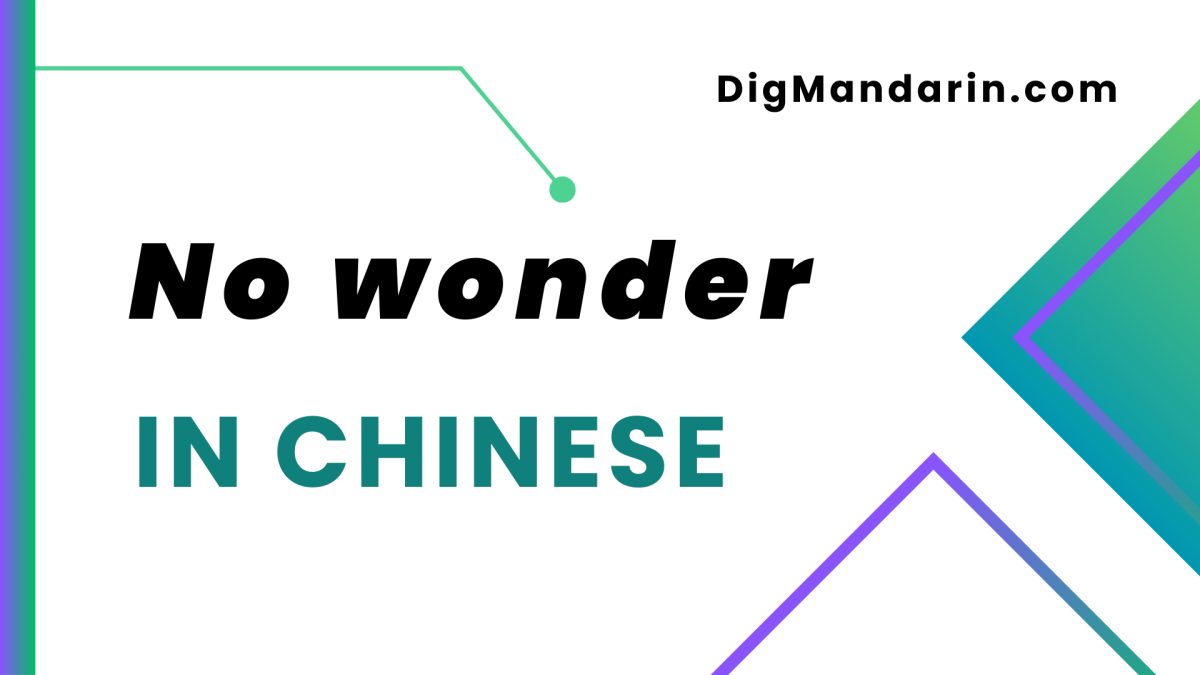Periodical Quora Q&As Digest about Chinese Learning – January 2015
Do you have inquiries about learning Chinese or about Chinese culture? Here we recommend a website called Quora.com. You can learn ask any question and there will be great answer from someone who has first hand experience with the topic. There are some interesting topics especially with non-native speakers who give some great insight on Chinese related questions. Here are practical and interesting topics about Chinese learning in this periodical digest.
General
1.Q:How do I learn Mandarin Chinese well?
A: As learners, we have different goals, motivations, and opportunities. Whether you looking to obtain business opportunities in China, taking expensive classes or have a passion for Chinese writing, you will not learn Chinese the same way. You will see that your goal may even change along the way since it’s a process learning Chinese Before you set your goals though you should find your own learning style and what motivates you to learn the language. I believe having internal motivation makes learning Chinese much easier than external motivations such as the idea of doing business in China. I think this is the key ingredient to learning Chinese well. Here are some details of how to learn Chinese well.
Getting started
First you should get the pronunciation right at the very beginning. You won’t be able to fix it efficiently later. The best way is with a Chinese teacher who can correct you. If you can’t find teacher, use a Pinyin Chart software and try to pronounce all the sounds exactly like you hear them. There are many software applications that you can use on your computer, smartphone or other devices.. It would better if you can find one with dictation where you need to guess the tones which will help you to pronounce them correctly. You can also find such drills online, like this one: Mandarin Chinese Tone Pair Drills.
There are 2 keys in mastering the tones: relentless drills with single and double syllables and listen to people speaking. With drills, practice makes perfect. Listening to people speak at the sentence level and imitate them will help you sound more native. It will become easier if you have done the drills before.
Enough about pronunciation, and let’s move on to a more interesting topic, immersion. Here are two things contributed enormously to my immersion in the Chinese language and culture:
1.QQ
This application has made the bridge between theoretical classroom Chinese and real life Chinese for me. This was the first time I realized reading a text in Chinese characters was not so out of reach as it seemed. Using QQ kick-started by ability to actually communicate with Chinese people. Through this application, I had real conversations in Chinese even though they were simple. This was a major milestone, which a few learners actually reach. At the beginning, I copy and paste from/to Google Translate all the time and used a mouse over a dictionary for every single word I had to read. But it paid off more than I could hope helping me learn faster.
2.Untethered immersion
When I first moved to China I usually hung out with my French classmates and had limited contact with the locals. I was somewhat in an expat bubble. After a few months though, I got a Chinese girlfriend. When we were going out with her circle of friends, the conversations were all in Chinese. This social outings forced me to learn listening skills in order to keep up with the conversations they were having. This time was a great leap forward in my listening comprehension.
At about that same time, I started watching Chinese TV series and movies. The subtitles in the TV shows and movies helped me understand the Chinese being used. Having both text and voice will help you make the bridge between words you know orally and the actual characters used in these words. I also paid more attention to every bit of writing I could see, whether in the street, at the post office, or karaoke lyrics.
Many people disregard Chinese characters and decide to learn only oral Chinese. I think you lose a lot by doing this method. By learning characters, it will increase on your oral Chinese, and the other way round. You get more insight by doing both at the same time. However, learning how to write characters is another matter. Writing skills will help the reading and vocabulary acquisition, but it’s less crucial.
Here is the summary of my suggestions of learning Chinese well.
- Learn Pinyin and do pronunciation drills until you are perfectly comfortable with Chinese phonetics.
- Learn basic characters, key vocabulary and simple sentences (for their grammatical patterns).
- Practice speaking, listening and reading through immersion.
- Add writing to the mix once you’re relatively comfortable with the other areas..
- Occasionally, pick up a grammar book to help you formalize and get a more abstract vision of what you learned.
Here are some recommendations for apps to get started:
Skritter is just amazing! Learning to write Hanzi with it is fun because it’s like playing a game. It was also a major proponent to increasing my vocabulary. This helped me because it uses a particular algorithm (Spaced Repetition) that makes it most efficient and fun!
ChinesePod’s Upper Intermediate and Advanced podcasts to learn more grammar patterns and idioms. Their podcasts are quite entertaining and cover a wide range of interesting topics. Then I could use Skritter to retain the lesson’s vocabulary in my memory. Many patterns I use naturally in my conversations today were first learned with ChinesePod.
Conclusion
Have an internal motivation (interest in the language itself) rather than an external one (making money in China). Why? If you enjoy learning Chinese because you find it fun and interesting, it will be much easier, and you will get much farther.
Make sure you get the pronunciation right from the start. It’s the only part which you will have trouble fixing later. Use pinyin charts, and do repetitive drills, until you’re sure your pronunciation is correct. Later it will service you well where you’ll be able to hear the different accents, and create your own personal accent. You’ll be able to sound either like a native, or you’ll forge your own accent.
Once you have the right motivation, and got the pronunciation right, it’s just a matter of time. Find the tools which fit your needs, seize the opportunities, and sooner than you think, you’ll be fluent.
2. Q: When making Chinese flashcards, is it best to put the character and Pinyin on the same side or on different sides (i.e., Pinyin & English // Character, or English // Pinyin & character)?
A: I’ve found it most helpful to use software that can test each element independently. Pleco’s flashcard system, for example, supports that. You could get much the same effect with physical cards if you used multiple cards per vocabulary word, e.g., (Pinyin // Characters; English // Characters; and, if you like, the third combination English // Pinyin) or putting the character on one side and the English plus pinyin on the other.
The best way is the way that helps you personally learn the fastest. You should try different combinations until you hit on the one that works best for you.
The nice thing about this setup is that it lets you account for different levels of recall about different aspects of a word. If you have no trouble remembering what a given set of characters meanings; however you may struggle remembering how to pronounce it, you can focus on just the pronunciation part by repeating that card more often.
Chinese Characters
3.Q: What are the sounds associated with certain radicals in the Chinese language?
A: The radicals do not indicate any phonetic content; it’s the other half of the character that does this. Radicals give you a category that can hint at the meaning of the character.
1. As an example, let’s begin with 马 ma3, which means horse. I can add radicals to this character to get new characters with very similar phonetic content:
By adding the female radical 女 + 马 = 妈 ma1, which means mother. The radical hints at the meaning, while the other half suggests the pronunciation.
2. Adding the mouth radical 口 +马 = 吗 ma, which is a particle indicating a question. The mouth radical is frequently seen with other radicals.
3. Adding two mouth radicals on top gives 骂 ma4, to scold.
These examples aren’t always same for every character though because there are a ton of exceptions:
- Adding the stone radical results in 码 ma3. 码头 (ma3 tou2) means jetty, so I suppose you can see where the stone radical came from here. However generally it means ‘digit’, for example in 号码 (hao4 ma3, number). It also means ‘yard’ as in the unit of measurement and it pops up in expressions like 起码 (qi3 ma3), meaning ‘at least’. The meaning of the word mostly has nothing to do with stone.
- Adding the bamboo radical gives 笃 du3, which means committed or earnest. This example shows how it doesn’t always show phonetics, and the bamboo radical doesn’t help either.
4.Q: Do you have to know Chinese characters (simplified) to speak and write Mandarin Chinese? Or can you just use pinyin?
A: As a tourist wishing to “get around” with some basic words, you can use pinyin, but if you plan to be fluent you need to learn the characters.
I can’t particularly imagine Chinese language without characters. You could probably only use pinyin to get around a Chinese-speaking area; have basic conversations and read street signs. However to have any level of proficiency beyond that, characters (simplified or traditional, either way) would be almost necessary to learn. The Chinese culture has evolved and wrapped itself around its own literary tradition and it would be very hard to do away with them without a serious impact on culture.
The western eye may find Chinese characters to be “complicated”, and the Chinese frequently think of their own language difficult to learn for westerners. Yet, it’s all a matter of how one is taught at a young age. All “complicated” characters are all built from simpler components, and are no more complicated than learning the spellings of thousands of words in a western language that breaks phonetic rules all the time. If you are a native English speaker and complain that 位 vs 立 has no phonetic relation, you should consider the pronunciations of through vs rough, or objection vs. object, or the million other words in the English language that have complicated phonetic rules or break rules. It’s largely a matter of what your brain is molded by as a child. Both Chinese characters and English spellings involve a lot of memorization over years.
Generally, nobody in the Chinese-speaking world would think about this question. Chinese characters are not only such an ingrained part of the culture but also have a number of advantages over pronunciation-based languages, that moving to an all-pinyin system would be almost unthinkable.
- Characters and their usage remain reasonably constant across dialects. It varies but remains intelligible enough to get by, even if the speech is unintelligible. This fact relies upon by so many in day-to-day situations. For example, if a waiter in a restaurant doesn’t speak Mandarin, it is a non-issue: I can point to what I want on the menu. I’ve used Chinese characters countless times in eastern Taiwan, USA’s Chinatowns, Malaysia and Japan at times when I was not able to speak the local language or dialect, and millions of others getting around like this worldwide as well.
- Characters and their usage also remain reasonably similar over time. So much so that an average well-studied high school graduate should be able to understand the gist of literature from 1000-1500 years ago without much trouble. That’s almost impossible with English without having studied a lot.
- Characters are faster to read than pinyin. Reading a paragraph in pinyin is an eyesore and much more taxing on the brain since you have to consciously subvocalize everything to understand what is being said.
- Characters are more space-efficient than pinyin.
Basically, the Chinese-speaking world would not even think of doing away with characters, not just for cultural reasons but also because they are useful. Signs, literature and day-to-day references will continue to revolve around characters, and for anyone wishing to be proficient in the language, it’s going to be necessary to learn them.
Culture
5. Q: How do I introduce myself in Mandarin?
If I want to introduce myself in Mandarin, do I use the European way of saying my name i.e “Gina Langridge” or do I use the Mandarin way, where my surname would come first? Will a Chinese person know which is my family name, and should I expect them to call me “Langridge” or “Gina”?
A: Introductions in Chinese depend on who you are speaking to which determines the level of assumed formality.
- Formal: In response to a formal question (e.g. in a hotel or meeting a stranger), ‘请问您贵姓?’ you simply use ‘我姓 Langridge’. They will then call you ‘Langridge 女士’ if they can pronounce your name (林 would be my suggested Chinese family name for you).
- Slightly less formal: ‘怎么称呼你/您?’ In this scenario the speaker is not sure how formal to keep things and is leaving it up to you. You can either keep things formal and answer as above or choose to make things less formal. As Chinese society becomes less formal, it’s more common to start with ‘我姓 Langridge’ Then ‘我叫Gina’ AND finally ending smilingly with ‘…你可以叫我Gina’ so they know what to call you. A deferent tactic here would be to give your Chinese nickname like ‘你可以叫我”小林”‘.
- Informal: if someone asks you ‘你叫什么名字?’ Then informality is assumed. I’d use ‘我叫 Gina Langridge, 你可以叫我Gina’. This happens most often with/between young people.
These answers were some of great insights to different aspects Chinese culture and we hope you learned something new. If you are interested or want to ask a different question about the China, go to Quora.com or our forum and discover what you are curious about. Your curiosity will lead you to great answers, so enjoy the new resource with your Chinese studies and have fun learning.





This Post Has 0 Comments